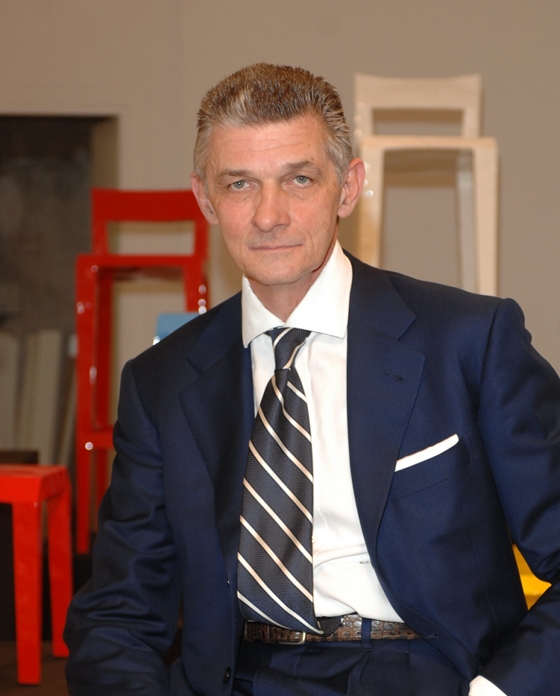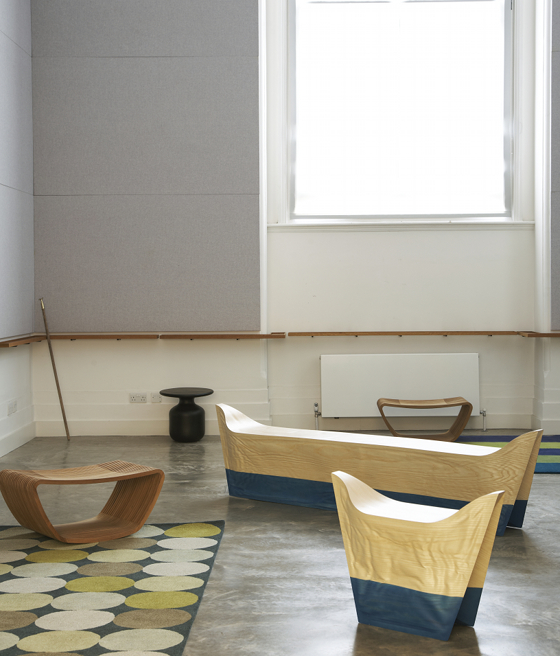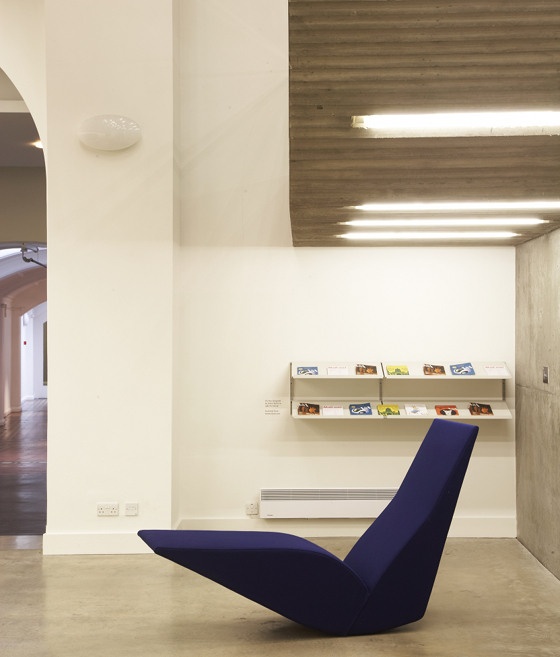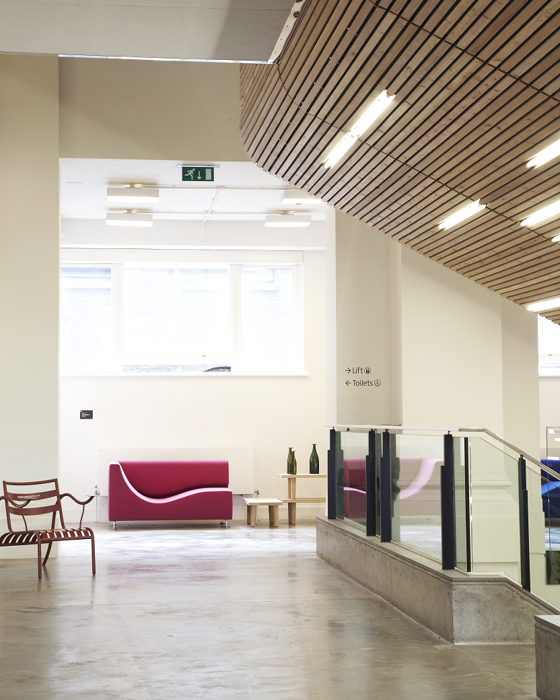When in London...: In conversation with Giulio Cappellini
Text by Simon Keane-Cowell
Zürich, Switzerland
05.10.10
This year's London Design Festival, now in its eighth year, was not only bigger than ever, it was also more international in complexion, with a significant number of non-British brands exhibiting in their permanent showrooms, in pop-up spaces and at the somewhat-past-its-sell-by-date 100% Design fair. Part of this foreign presence, but by no means a new one in relation to the UK, came in the form of Cappellini's exhibition at the V&A Museum, which reflected on the manufacturer's collaborations with British designers for over two decades. Architonic was there to talk to the company's art director and creative-talent scout, the ever dapper Giulio Cappellini.
I was recently approached by a Belgian design magazine to contribute to a feature on the country's design scene. 'How would you describe Belgian design?' and 'What for you is typical Belgian design' were just a couple of the questions posed by the journal. In trying to formulate a response, I was reminded of just how problematic an enterprise it is attempting to define the output of a group of creative practitioners along national lines.
Italian design manufacturer Cappellini's art director, Giulio Cappellini, described by British design studio BarberOsgerby as 'the single most important man in design'

Italian design manufacturer Cappellini's art director, Giulio Cappellini, described by British design studio BarberOsgerby as 'the single most important man in design'
×We would appear to be living in a global design age where the exchange of creative ideas, the dynamic of creative influence – aided in no small part by the instantaneity with which online design blogs and other platforms disseminate information about the latest products and projects – has accelerated dramatically, increasing with it our need to consume such information at an insatiable rate.
It's fascinating in this context, therefore, to see Cappellini, one of the giants of Italian design manufacturing, create an exhibition at the V&A Museum in London to showcase its long-standing collaboration with British designers. Open during this year's London Design Festival, in itself increasingly international in the profile of its exhibitors and other participants, here is a show that presents British design, manufactured in Italy, back to the British, if you will. National design promotion from afar.
Following a panel discussion at the V&A to mark the exhibition's opening, which included design studios BarberOsgerby and Raw Edges (the latter hailing from Israel, but practising for a number of years out of the British capital, which is in itself interesting within a conversation about a national design), both of whom have successfully designed for Cappellini, I talked to the company's art director Guilio Cappellini about his take on British design culture, why he welcomes competition, and what it's like to be credited with having established the names of some of the highest-profile figures in British design, such as Jasper Morrison and Tom Dixon.
Cappellini's show at the V&A Museum, as part of the London Design Festival, underscored the role British designers have played in evolving the Italian manufacturer's creative voice; BarberOsgerby's 'Hula' (l), Raw Edges' 'Tailored Wood' series (r)

Cappellini's show at the V&A Museum, as part of the London Design Festival, underscored the role British designers have played in evolving the Italian manufacturer's creative voice; BarberOsgerby's 'Hula' (l), Raw Edges' 'Tailored Wood' series (r)
×.....
Why did you decide to make this exhibition? And why now?
Well, we wanted to do an exhibition to celebrate the cooperation between Cappellini and British designers. It's an old story that started 25 years ago with Jasper Morrison and Tom Dixon, but a cooperation that's still alive today with BarberOsgerby, Michael Young and Raw Edges. But it's difficult nowadays to say 'What is British design?' Each different designer has his own style. But I think, and it's important for Cappellini, that we can still find new talent and younger designers worldwide and here in England I'm still finding some really interesting people. This year we presented Raw Edges' pieces and we're working on some new projects with them.
The interesting thing about this exhibition is that you can see some products that are 20, 25 years old, but that are still good and still valid. As I always say, I like very much to work on longsellers rather than bestsellers.
The fact that you are an Italian designer/manufacturer showing Italian-manufactured products, designed by British designers, in London to a predominantly British audience – I wonder what that says about the state of British design culture?
When we think of Italian design culture, we often think of the relationship between Italian designers and Italian industry that grew up in the 1950s. Today, however, I think the landscape has changed. There is a group of companies who like to invest, to take risks, to work with designers coming from different parts of the world and with different cultures, with different stories and so on. To work always with innovation and to be very contemporary. Today, I think to be very contemporary is to work in an innovative way.
Tom Dixon's 'Bird' chair, launched in 1991, for Cappellini, just one of the British designer names the Italian company helped establish

Tom Dixon's 'Bird' chair, launched in 1991, for Cappellini, just one of the British designer names the Italian company helped establish
×What would your advice be to British manufacturing if you were not Giulio Cappellini, if you were being completely objective? I mean, it's not easy, on the whole, to identify good British design manufacturers.
That's true. In Italy, we have a lot of very design-oriented manufacturing companies. In England, there is certainly something going on. In the last few years, Established & Sons have created a really interesting company. In fact, I told them when they started out that they reminded me of Cappellini 20 years ago.
Which I'm assuming they took as a huge compliment.
(Laughs.) Well, they were really satisfied with this. No, worldwide you can find a few small companies in Germany or in England, or some companies in the States. For sure in Italy there is the biggest concentration of design-driven companies. But, in the future maybe, the landscape will change and maybe some British companies will grow and start to work in a proper way with design.
Do you welcome that even though they might be potential competitors?
Absolutely. Why not? I think the most important thing is that each company has its own image. I don't care if it's a British or Italian or Germany company...
That's an interesting point. I wonder how useful it is to talk about design at all along national lines? Clearly, the internet, and design blogs in particular, have accelerated and widened the circulation of ideas and creative influence, making things much more global.
Well, the market is becoming more and more global, but I think that each different country still has its own different culture, in terms of design, but also in terms of production. I think that if in the world, for example here in England or in other countries, we can find companies growing, then it's a good competition and I'm happy about that. Absolutely.
Jasper Morrison's red 'Three Sofa de Luxe' sofa for Cappellini, launched in 1992, stands out at the Italian manufacturer's exhibition at the V&A Museum during this year's London Design Festival

Jasper Morrison's red 'Three Sofa de Luxe' sofa for Cappellini, launched in 1992, stands out at the Italian manufacturer's exhibition at the V&A Museum during this year's London Design Festival
×Speaking of difference, have you found there to be cultural differences in the way that British designers or designers based in the UK work with you, as opposed to, say, Italian ones?
I think that each designer works in a different way. Also, when we talk about 'British design' there isn't just one definition. I think a company has to respect the single language of each designer. And each single designer has to understand what a company can do and what it cannot do. So, it's very important to establish a very strong relationship between the company and the designer. Sometimes it takes months or years. We don't have one way we work with all the designers. Some designers like to work on every detail. Others prefer to work on prototypes. We have to respect their own freedom and their own personality.
As someone who's identified and fostered new talent for so long, has the ability to do this become more instinctive with time, more easy?
No. But sometimes I see a prototype. Sometimes I see a sketch. Sometimes a prototype. Or meeting a person and realising we can do something together. So every time the approach is very different. For me the important thing is to try to establish the right feeling. With some designers we start with the first ideas and then arrive at the final product. With others it can take years and we never get past the prototypes. But, again, each time is different.
You were just described in the panel discussion by Jay Osgerby of BarberOsgerby as 'the single most important man in design'. How does that make you feel?
(Laughs.) Well, you know, I like what I do. This is my life. For me, it's very important to always look to the future. I'm not the only one, though. There are other interesting people doing this. But I do work with great passion. Although I've made a lot of mistakes, for sure. There is a lot of responsibility. But I've been doing this for 25 years and I hope to be doing it for the next 25 years. Always to be curious and always to try and discover something new and interesting.
Well, we won't talk about the mistakes. Not today.
(Laughs.) Good.
Thank you for talking to us.
.....



